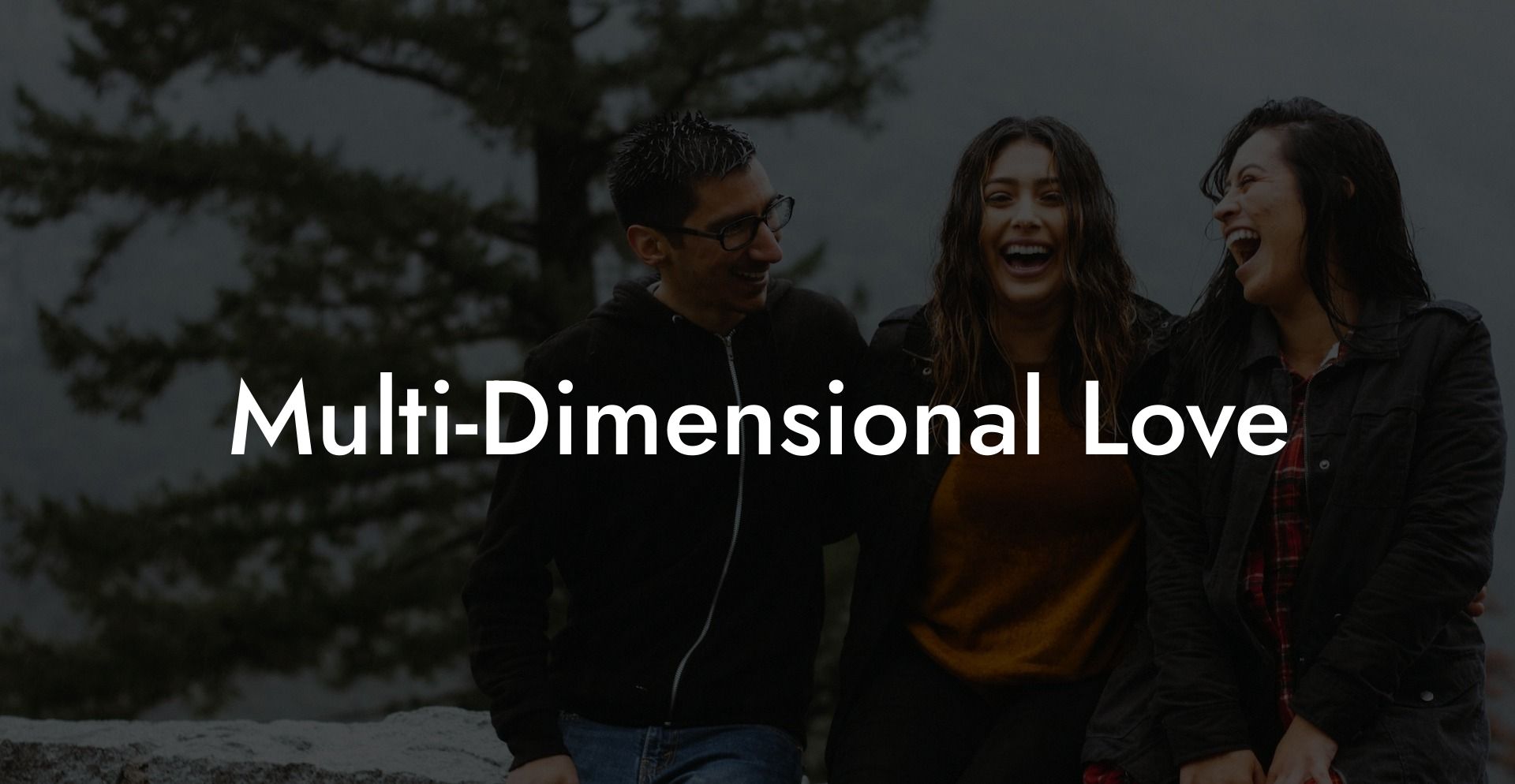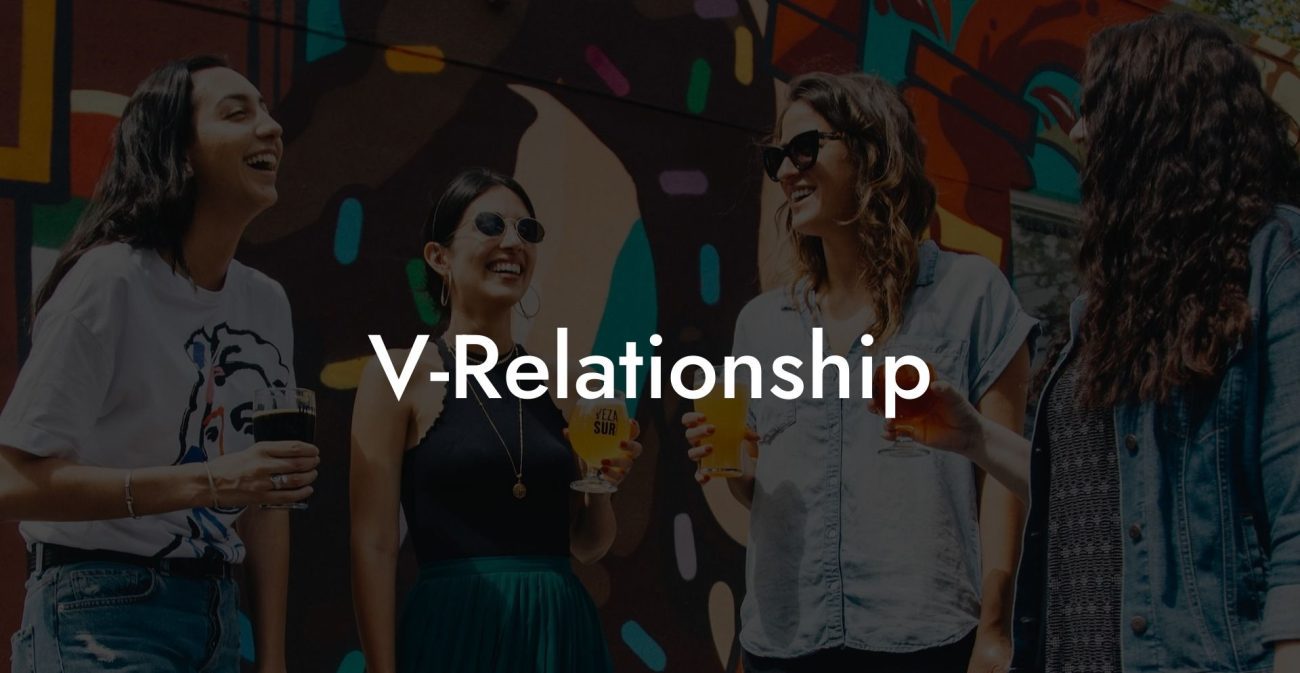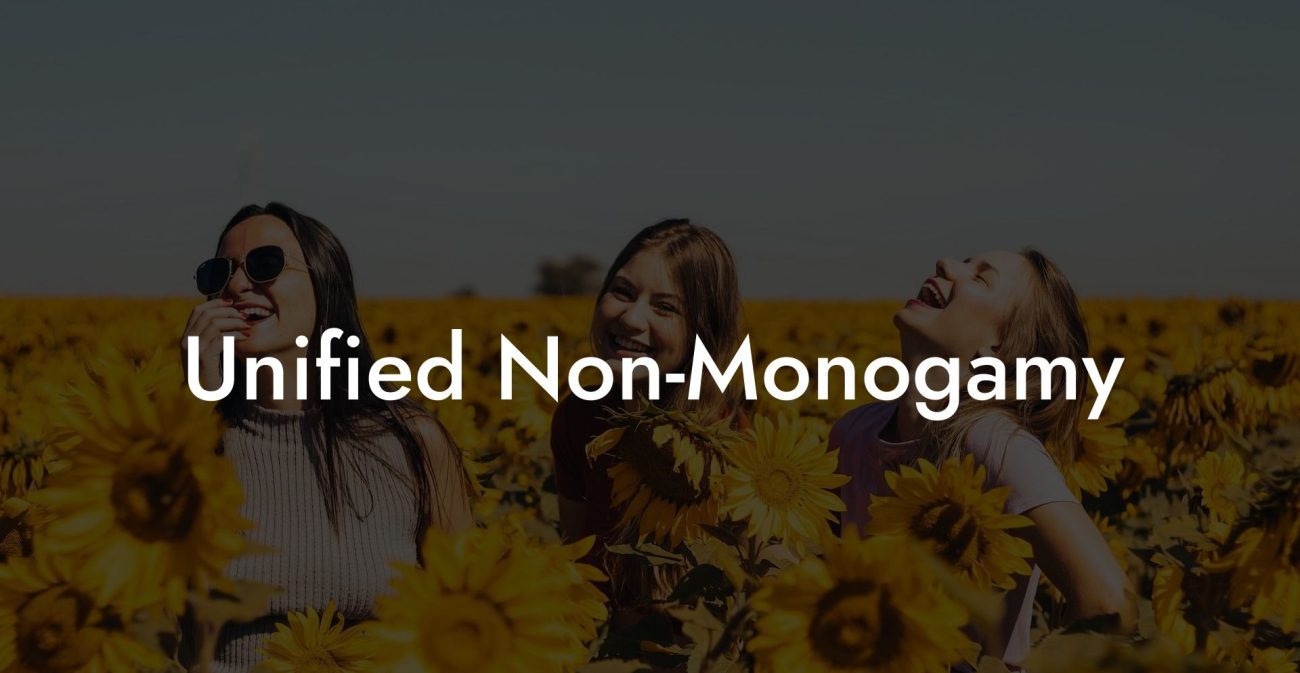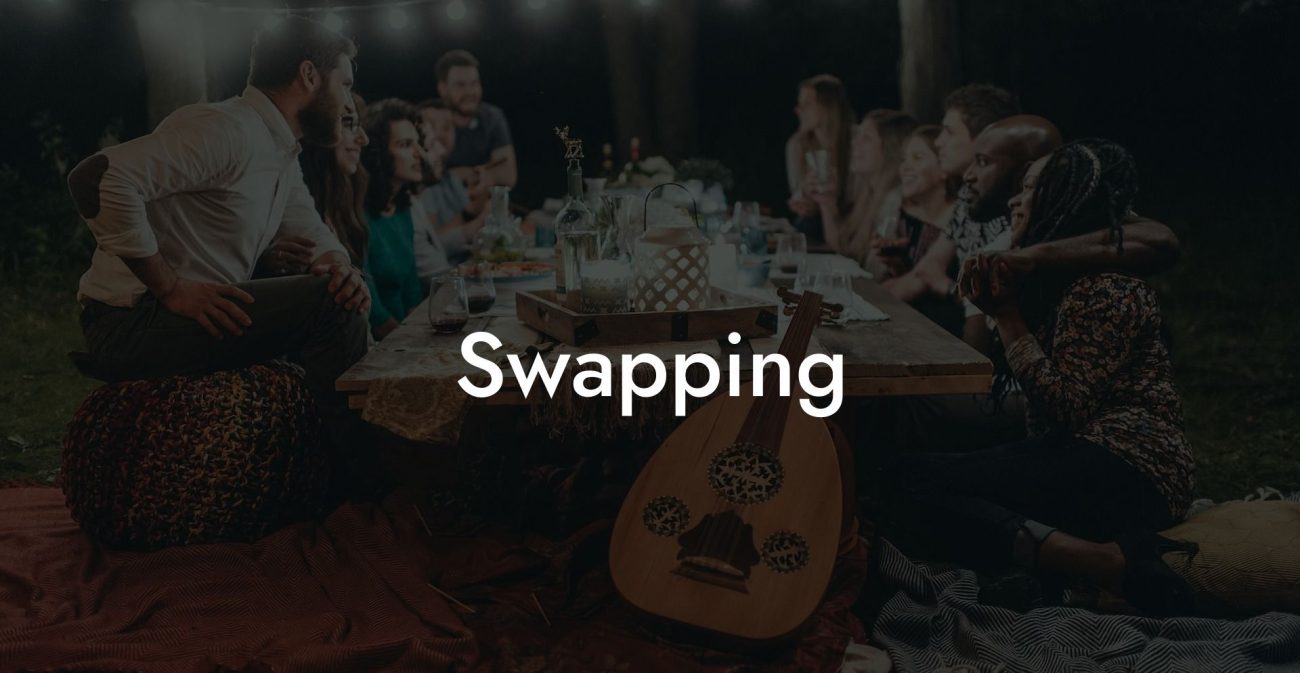Multi-Dimensional Love

Imagine love as a kaleidoscope of emotions, a dynamic interplay of feelings that transcends simple labels and defies traditional boundaries. Welcome to Multi-Dimensional Love, a revolutionary concept in ethical non monogamy that challenges you to see your connections as complex, layered, and ever-evolving. In this model, love is not confined to one narrow definition but is celebrated in all its facets, from the gentle warmth of emotional support to the exhilarating spark of physical passion, from intellectual synergy to spiritual resonance. Get ready to explore a framework that honors the full spectrum of your heart’s capacity, allowing every relationship to contribute its unique hue to the masterpiece of your life.
Quick Links to Useful Sections
- The Ethical Non Monogamy Term: Multi-Dimensional Love
- What Is Multi-Dimensional Love?
- Core Principles of Multi-Dimensional Love
- A Quick Video Explanation
- Historical and Cultural Perspectives on Multi-Dimensional Love
- From Simplistic Narratives to Rich, Complex Tapestries
- Cultural Shifts in Modern Relationship Models
- Everyday Dynamics of Multi-Dimensional Love
- Embracing the Full Range of Your Emotional Being
- Renegotiating Boundaries as You Grow
- Integrating Multiple Forms of Intimacy
- Benefits of Embracing Multi-Dimensional Love
- Richer, More Complex Emotional Connections
- Personal Growth and Empowerment
- Improved Communication and Conflict Resolution
- Collective Resilience and Mutual Support
- Challenges of Multi-Dimensional Love
- Managing Emotional Complexity
- Balancing Individual Needs with Collective Dynamics
- Adapting to Continuous Change
- Navigating External Judgment
- Frequently Asked Questions (FAQ)
- Resources and Community Support: Your Next Steps
The Ethical Non Monogamy Term: Multi-Dimensional Love
What Is Multi-Dimensional Love?
Multi-Dimensional Love is a framework that views intimacy and connection as a composite of multiple layers, emotional, physical, intellectual, and spiritual. Rather than reducing love to a single, monolithic experience, this approach recognizes that every relationship you form contributes in its own distinct way to your overall well-being. Whether you’re sharing deep conversations, exploring adventurous physical experiences, exchanging creative ideas, or engaging in spiritual practices, each dimension adds depth and richness to your understanding of love.
In ethical non monogamy, Multi-Dimensional Love encourages you to embrace the complexity of your relationships. It is an invitation to celebrate that your capacity to love is not finite but can expand to accommodate a variety of connections, each with its own unique rhythm and intensity. This model helps you move beyond the limitations of conventional relationship structures by recognizing that every facet of love is valuable and that the interplay between different dimensions creates a more resilient and fulfilling emotional network.
Core Principles of Multi-Dimensional Love
- Holistic Connection: Embrace the full range of intimacy, emotional, physical, intellectual, and spiritual, as interconnected elements that together form a complete expression of love.
- Dynamic Fluidity: Understand that your feelings and connections are not static; they evolve with time, experience, and personal growth.
- Authentic Expression: Encourage vulnerability and honest self-expression across all dimensions, allowing your true self to shine in every interaction.
- Inclusive Communication: Foster open, transparent dialogue that ensures all aspects of your relationships are nurtured and respected.
- Adaptive Boundaries: Continuously renegotiate your limits to reflect your evolving needs, ensuring that each dimension of love remains healthy and consensual.
- Mutual Empowerment: Recognize that every partner contributes uniquely to your multi-dimensional love, and that shared growth enhances the collective strength of your connections.
- Integration of Experiences: View every interaction, whether intellectual debates, physical affection, emotional support, or spiritual practices, as a vital piece of your love puzzle that, when integrated, creates a richer overall tapestry.
A Quick Video Explanation

Historical and Cultural Perspectives on Multi-Dimensional Love
From Simplistic Narratives to Rich, Complex Tapestries
For much of history, love was often depicted as a singular, idealized experience, a timeless, unchanging bond between two individuals. Traditional monogamous narratives emphasized exclusivity and simplicity, portraying love as an all-or-nothing affair with rigid boundaries and clear-cut roles. This limited view left little room for the multifaceted nature of human connection.
However, as cultural revolutions began to challenge these norms during the sexual revolution, feminist movements, and the advent of alternative relationship models, people started to see love in a new light. Early pioneers in ethical non monogamy observed that individuals could experience multiple forms of intimacy simultaneously. They argued that the heart’s capacity for love was not limited to a single, exclusive bond but was instead capable of flourishing across several dimensions.
This shift in perspective laid the foundation for Multi-Dimensional Love, a framework that rejects the simplistic view of love and embraces its full complexity. The evolution from singular narratives to rich, layered tapestries of connection has allowed individuals to redefine intimacy in ways that are authentic, inclusive, and empowering.
Cultural Shifts in Modern Relationship Models
In the contemporary era, where digital connectivity and global communication expose us to a multitude of relational models, the concept of Multi-Dimensional Love resonates powerfully. Millennials and Gen-Z, in particular, are reimagining what it means to connect with others by rejecting the confines of traditional monogamy and embracing relationships that are fluid, diverse, and expansive.
Modern relationship discourse now celebrates the idea that love is not a limited commodity but an evolving spectrum of experiences. Online communities, blogs, podcasts, and social media platforms have all contributed to spreading the message that every facet of love, be it emotional, physical, intellectual, or spiritual, has its own value. Multi-Dimensional Love is at the forefront of this cultural shift, offering a paradigm where every connection, no matter how varied, plays a crucial role in your overall emotional well-being.
Everyday Dynamics of Multi-Dimensional Love
Embracing the Full Range of Your Emotional Being
Practicing Multi-Dimensional Love in your everyday life means allowing yourself to fully experience and express every facet of intimacy. It involves recognizing that your emotional landscape is vast and that every relationship you form contributes to the overall picture of who you are.
- Daily Emotional Check-Ins: Spend time each day reflecting on your feelings through journaling, meditation, or simply a quiet moment of introspection. Identify which dimensions of love are most active and why.
- Open Dialogues with Partners: Regularly engage in conversations with your partners about your emotional states. Discuss how you’re experiencing various forms of intimacy, whether a tender moment of support or an exciting burst of passion, and share what each connection means to you.
- Creative Expression: Use artistic outlets such as painting, music, or writing to express your emotional spectrum. Let your creativity serve as a visual or auditory representation of your multi-dimensional love.
- Holistic Relationship Rituals: Establish rituals that integrate various dimensions of intimacy. This could be a weekly gathering where you share your thoughts, celebrate successes, and set intentions for the week ahead, or even a recurring date that combines intellectual conversation with physical closeness.
Renegotiating Boundaries as You Grow
One of the most important aspects of Multi-Dimensional Love is the continual renegotiation of boundaries. As you evolve and your emotional needs change, so too should your relationship agreements. This process is vital to maintaining healthy connections that reflect your true self.
- Regular Boundary Reviews: Set aside time with each partner, or as a group if applicable, to discuss whether current boundaries still serve your evolving needs and to make adjustments as needed.
- Feedback and Adjustment: Create a culture of continuous feedback where every partner feels empowered to share their insights and suggestions for improvement.
- Adaptive Agreements: Think of your relationship agreements as living documents that evolve with you. Embrace change as an opportunity to deepen your connections and enhance your overall emotional well-being.
Integrating Multiple Forms of Intimacy
Multi-Dimensional Love isn’t limited to a single mode of connection, it’s about integrating various forms of intimacy into a cohesive, enriching experience. This integration involves:
- Emotional Intimacy: Share your deepest thoughts, fears, and dreams with your partners, building a foundation of trust and mutual support.
- Physical Intimacy: Explore physical expressions of love that range from tender touch to passionate encounters, each contributing to your overall sense of closeness.
- Intellectual Connection: Engage in stimulating conversations and collaborative projects that challenge your mind and foster mutual growth.
- Spiritual Bonding: Share in practices like meditation, mindfulness, or even discussions about meaning and purpose that deepen your spiritual connection.
Benefits of Embracing Multi-Dimensional Love
Richer, More Complex Emotional Connections
By embracing the full range of your emotional capacities, you cultivate relationships that are layered, resilient, and deeply fulfilling. Every connection adds a unique element to your overall emotional tapestry.
- Layered Intimacy: Multiple dimensions of connection create a robust network of love that can adapt to change and withstand challenges.
- Enhanced Empathy: Engaging with diverse forms of intimacy broadens your perspective, allowing you to understand and appreciate the complexities of your own emotions as well as those of your partners.
Personal Growth and Empowerment
Multi-Dimensional Love is a journey of continuous self-discovery. As you explore different facets of intimacy, you gain deeper insights into your true self, your desires, and your potential for growth.
- Increased Self-Awareness: Regular self-reflection helps you identify your emotional triggers and understand what truly nourishes you.
- Empowerment Through Diversity: Embracing a wide spectrum of love reinforces your confidence and affirms that your capacity to connect is limitless.
Improved Communication and Conflict Resolution
Open and honest communication is essential for navigating the complexities of Multi-Dimensional Love. By discussing your emotions and renegotiating your boundaries regularly, you create a space for resolving conflicts constructively and deepening mutual understanding.
- Proactive Dialogue: Routine conversations help prevent misunderstandings and address issues before they escalate.
- Constructive Feedback: Continuous, empathetic communication fosters an environment where conflicts can be resolved in a way that respects all parties involved.
Collective Resilience and Mutual Support
When your love life is multi-dimensional, every relationship contributes to a collective support network that bolsters your resilience. This interconnected system of love provides stability during challenging times and enhances your overall emotional well-being.
- Shared Strength: A diverse network of relationships creates a safety net that offers multiple avenues of support.
- Unified Growth: As each connection evolves, the overall network becomes stronger, fostering a sense of unity and collective empowerment.
Challenges of Multi-Dimensional Love
Managing Emotional Complexity
With the integration of various forms of intimacy, your emotional landscape can become complex and, at times, overwhelming. Balancing different dimensions of love requires continuous self-reflection and effective communication.
- Tip: Engage in regular journaling or mindfulness practices to process and understand your emotions.
- Tip: Schedule consistent check-ins with your partners to ensure that every aspect of your love is nurtured and that boundaries are adjusted as needed.
Balancing Individual Needs with Collective Dynamics
Ensuring that your personal emotional needs are met while contributing to a broader network of connections can be challenging. Conflicts may arise when individual desires clash with the collective vision of your multi-dimensional love.
- Tip: Maintain open, honest dialogue with your partners about your expectations and be willing to negotiate boundaries that honor both personal and collective needs.
- Tip: Practice empathy and active listening to foster a balanced approach to all facets of your love life.
Adapting to Continuous Change
As you grow and your relationships evolve, your emotional needs and boundaries may shift. Adapting to these changes requires flexibility and a willingness to continuously renegotiate your agreements.
- Tip: Embrace change as a natural part of your emotional journey and view every adjustment as an opportunity for growth.
- Tip: Regularly revisit your relationship agreements and use feedback to fine-tune your boundaries and practices.
Navigating External Judgment
Despite the progressive nature of Multi-Dimensional Love, traditional societal norms may still challenge your approach to diverse, layered relationships. External criticism can sometimes lead to self-doubt or pressure to conform.
- Tip: Build a supportive community of like-minded individuals who celebrate diversity in love.
- Tip: Focus on your personal growth and the enriching experiences that come from embracing every dimension of intimacy, letting negative opinions fade into the background.
Frequently Asked Questions (FAQ)
1. What is Loving Spectrum in ethical non monogamy?
Loving Spectrum is the concept that love exists as a diverse, dynamic range of emotional expressions. It encompasses the idea that every relationship contributes a unique “color” to your overall experience, resulting in a rich, layered network of intimacy.
2. How does Loving Spectrum differ from traditional models of love?
Traditional models often view love as a singular, exclusive bond, while Loving Spectrum celebrates the multiplicity and fluidity of emotional connections, allowing for a more expansive and inclusive experience of intimacy.
3. What are the core principles of Loving Spectrum?
Core principles include the diversity of emotional expression, fluidity and adaptability, holistic integration of various forms of intimacy, open communication, adaptive boundaries, mutual empowerment, and inclusivity.
4. How can I practice Loving Spectrum in my daily life?
Practice by engaging in regular self-reflection, maintaining open dialogues with your partners, creatively documenting your emotional experiences, and being willing to adapt your boundaries as your needs evolve.
5. What benefits does Loving Spectrum offer?
Benefits include deeper, more layered emotional connections, increased self-awareness, improved communication and conflict resolution, and a resilient support network that adapts to your evolving emotional landscape.
6. What challenges might I face with Loving Spectrum?
Challenges can include managing the complexity of diverse emotional experiences, balancing individual needs with collective dynamics, adapting to continuous change, and navigating external societal pressures.
7. How important is communication in maintaining Loving Spectrum?
Communication is essential, it ensures that every connection is nurtured, that boundaries are regularly renegotiated, and that your dynamic emotional landscape remains aligned with your true self.
8. Can Loving Spectrum be applied to both monogamous and non monogamous relationships?
Yes, the concept is universal and can enhance any relationship model by fostering a rich, multifaceted network of diverse connections.
9. How do adaptive boundaries contribute to Loving Spectrum?
Adaptive boundaries allow your relationships to evolve naturally as your emotional needs change, ensuring that your connections remain healthy, consensual, and reflective of your current state.
10. What role does self-reflection play in Loving Spectrum?
Self-reflection is crucial, it helps you understand your evolving emotional needs, track your personal growth, and ensure that your relationships continue to align with your authentic self.
11. How do shared experiences enhance Loving Spectrum?
Shared experiences add depth and meaning to your emotional tapestry, creating a vibrant, interconnected network that reinforces the resilience and beauty of your diverse relationships.
12. Where can I find additional resources on Loving Spectrum and ethical non monogamy?
Additional resources include books like The Ethical Slut by Dossie Easton & Janet Hardy, podcasts such as Multiamory, and online communities like r/polyamory that explore innovative, adaptive approaches to love.
Resources and Community Support: Your Next Steps
- The Ethical Slut by Dossie Easton & Janet Hardy – A foundational resource that explores ethical non monogamy and offers practical strategies for nurturing a rich, multifaceted Loving Spectrum.
- Podcasts: Listen to Multiamory and similar shows for expert insights, personal stories, and creative ideas on cultivating your Loving Spectrum.
- Online Communities: Engage with forums like r/polyamory to share experiences, ask questions, and connect with others who celebrate diverse expressions of love.
- Workshops and Webinars: Attend events on relationship psychology, ethical non monogamy, and creative communication to deepen your understanding and expand your support network.
- Therapy and Counseling: Consider professional guidance if you need help managing complex emotions or navigating the evolving dynamics of your Loving Spectrum.
By engaging with these resources and incorporating the practical strategies outlined in this guide, you can fully embrace Loving Spectrum as a transformative approach to connection. Celebrate every unique shade of your emotional palette, nurture each diverse bond, and let your love expand into a rich, dynamic tapestry of authentic, empowered intimacy.
Lost & confused by all of the terms, types and seemingly made up 3 letter acronyms?? We've got you. Check out our Ethnical Non-Monogamy Dictionary >>
Useful Interruption: Not sure which relationship vibe fits you best? Take our Relationship Test, it’ll give you the real insight into your natural relationship style. Then, dive into our binge-worthy guides (from the tried-and-true to the “wait, that’s a thing?”) and find the perfect relationship type for your life:
- Monogamy
- Open Relationships
- Ethical Non-Monogamy
- Solo Polyamory
- Non-Hierarchical Polyamory
- Hierarchical Polyamory
- Relationship Anarchy
- Swinging
Now back to the main article but yeah take the test...












